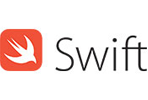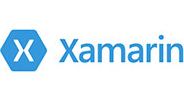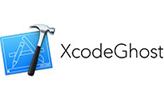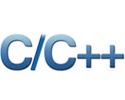![]()
In today's rapidly evolving digital market, multi-vendor apps have gained immense popularity as they provide a single platform for various sellers to present their goods or services. This strategy enables sellers by increasing their reach and market visibility while simultaneously benefiting customers by providing a wide selection of options. In this comprehensive guide, we will explore the process of developing a multi-vendor app, emphasizing crucial features, development procedures, and the significance of working with a reputable Multi-Vendor E-commerce App .
Contents
- Recognizing the Different Types of Multi-Vendor Apps
- Essential Elements of a Multi-Vendor App
- Revenue Generation Strategies for Multi-Vendor Apps
- A Comprehensive Guide to Developing a Technology Stack for Multi-Vendor Applications
- Timetable for Developing a Multi-Vendor App and Estimating Development Costs
- Conclusion
Knowing How to Use Multi-Vendor Apps
Different vendors can sign up, create profiles, and display their goods and services using apps. These apps let users browse through a variety of offerings in one location, simplifying the shopping experience for them. These apps are becoming more popular in a range of industries, such as e-commerce, travel, and food delivery, due to the growing desire for convenience and variety.
Multi-Vendor App Benefits
- Greater Selection of Products: A wide range of products from various suppliers are available to consumers.
- Increased Seller Exposure: Without the requirement for a stand-alone app, sellers can connect with a larger audience.
- Simplified Shopping: Customers can quickly compare items, costs, and reviews.
- Centralized Management: From a single dashboard, administrators may oversee several vendors.
Categories for Multi-Vendor Apps
We can divide multi-vendor apps into groups based on their functionality and industry. Here are a few typical kinds:
- Marketplaces for Electronic Commerce: Marketplaces such as eBay or Amazon, where a number of vendors sell goods.
- Marketplaces for Services: Apps like Fiverr or Upwork connect clients and service providers (freelancers).
- Apps for Food Delivery: Apps with numerous vendors, like Zomato and Uber Eats, enable users to place orders from various restaurants.
- Marketplaces for Rentals: These websites enable users to rent various items, such as cars through Turo or accommodations through Airbnb.
Crucial Elements of a Multi-Vendor Application
It is necessary to include certain functionalities in a multi-vendor app in order to improve the user experience and optimize workflow. The following is a list of crucial elements:
Features for Users
- Users should be able to establish profiles and register using email addresses or social media accounts.
- An intuitive user interface with categories and filters for perusing goods and services.
- The shopping cart allows customers to easily check out after adding items to their cart.
- Users can keep track of their purchases with real-time order monitoring.
- Several payment gateways support safe transactions.
- Users are able to rate and evaluate vendors and items based on their experiences.
Features for Vendors
- The ability to build and maintain profiles for sellers should be provided.
- Suppliers are able to add, modify, and remove goods and services.
- A sales, order, and customer interaction dashboard.
- Suppliers have access to information about their performance and sales.
- Admins have the ability to monitor activity, handle disputes, and manage user and vendor accounts.
- Prior to a product going live on the platform, admins have the ability to examine and approve it.
- Sales information, user activity, and general app performance insights are available.
- Administrators have the ability to create user-only discount codes and promotional campaigns.
Apps with Multiple Vendors: Monetization Models
Putting in place strong monetization techniques is essential to the survival and expansion of a multi-vendor app. Here are a few typical models:
- Commission-Based Monetization Model: Take a cut of each transaction that happens via the app.
- Subscription Fees: In order to use the platform, vendors must pay a regular charge.
- Listing Fees: Required for vendors to list their products or services on the app.
- Promotion: Permit outside businesses to pay to advertise on the site.
- Freemium Model: Provide free basic services but charge for upgraded versions.
Methodical Approach to Developing a Multi-Vendor Application
The process of developing a multi-vendor app is methodical. To create a successful app, adhere to the following guidelines:
Step 1: Studying the Market
- Determine your target market: recognize the characteristics and inclinations of your users.
- Examine the Competition: Examine current multi-vendor apps to determine their advantages and disadvantages.
- Identify User Pain Points: Know what problems people are having and how your app can help them.
Step 2: Establish a Business Plan
- Select the Multi-Vendor App Type: Choose whether you want to develop an app for food delivery, services, e-commerce, or rentals.
- Choose Your Monetization Techniques: Determine how you will make money based on your business concept.
Step 3: Create a Functional and Feature Plan
- List the essential elements (mentioned above) that your app has to have.
- Advanced Functionalities: Think of extra features like chat assistance, AI suggestions, and more.
Step 4: Assign a Development Group
- Locate a Reputable Development Company for Apps: Seek out an Indian mobile app development firm that specializes in multi-vendor applications.
- Examine reviews and portfolios: Examine prior initiatives to make sure they are dependable and of high quality.
Step 5: Create the User Interface
- Make wireframes and prototypes: Draw out the layout and flow of your application visually.
- Pay attention to the user experience and make sure the design is simple to use and intuitive.
Step 6: Create the Application
- Select the appropriate technology stack: Work together with your development team to choose appropriate technologies.
- Frontend and Backend Development: Put the features and design into practice while keeping scalability and performance in mind.
Step 7: Thoroughly Verify the Quality Assurance of the App
- Testing to identify and rectify any flaws or problems.
- Testing for user acceptance: Engage a user group to test the app and offer comments.
Step 8: Open the Application
- Install on App Stores: Release your app on stores like the Apple App Store and Google Play.
- Put Marketing Strategies into Practice: To promote your app, use SEO, social media, and digital marketing.
Step 9: Observe and Enhance
- Obtain User Input: Gather input on a regular basis to pinpoint areas that need improvement.
- Revise and Improve Features: Update your app frequently to include new features and enhancements depending on user feedback.
Multi-Vendor Apps: Technology Stack
Selecting the appropriate technology stack is essential when developing an application with multiple vendors. The following table lists the standard technical components:
| Technologies Suggested for Technology Components | Front-end | Back-end | Database | Payment Gateways | Cloud Services | Push Alerts | Analytics |
|---|---|---|---|---|---|---|---|
| Technologies | Flutter, Angular, React Native, or Vue.js | PHP, Django, Ruby on Rails, or Node.js | Firebase, MySQL, or MongoDB | Braintree, PayPal, Razorpay, and Stripe | Microsoft Azure, Google Cloud, or Amazon | Apple Push Notifications (APNs) or Firebase Cloud Messaging (FCM) | Mixpanel, Google Analytics, or the amplitude |
The Development Timeline
A multi-vendor app's development duration can vary depending on its complexity and team size. Below is a general estimate of each phase:
| Development Phase | Length (Weeks) |
|---|---|
| Market Analysis | 2-4 |
| UI/UX Design | 4-6 |
| Development of Front-end and Back-end | 8-12 |
| Testing and Quality Assurance | 4-6 |
| Promotion and Start-Up | 2-4 |
Total Projected Time: 20-30 Weeks
Cost Estimation for Developing a Multi-Vendor App
The cost estimate for creating an application with several vendors can vary based on features, technology stack, and the development team's location. Here is an estimated cost breakdown:
| Development Phase | Estimated Cost (USD) |
|---|---|
| UI/UX Design | $5,000 |
We to code. It's our passion










you can also reach us at our given
email address or phone number.




